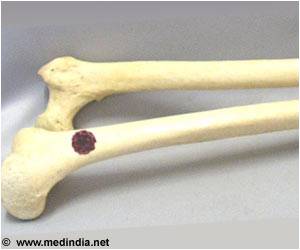Highlights
- Fibrotic tumors contain a form of mechanical energy called solid stress, which promotes the growth and migration of the cancer
- The solid stress compresses blood vessels and lymphatics and prevents the delivery of chemotherapy and immunotherapy to the cancer cells
- Researchers from the Massachusetts General Hospital have come up with new experimental and mathematical frameworks to measure solid stress in tumors
- It arises due to the uncontrollable growth of the cells and matrix of the tumor and is contributed by the collagen and hyaluronan content of the tumor i.e. the solid content of the tumor
- It compresses the cancer cells which in turn promotes initiation and migration of the tumor through its effects on gene expression, proliferation of cancer cells and invasiveness of the tumor. The solid stress increases according to the size of the tumor
- It compresses the blood and lymphatic vessels in the tumor, which reduces the effectiveness of chemotherapy and immunotherapy (e.g. antibodies). This makes the tumor more difficult to treat. The reduced lymphatic drainage increases the interstitial fluid pressure within the tumor
Researchers from the Massachusetts General Hospital have arrived at new experimental and mathematical frameworks to measure solid stress within tumors. These can be used to:
- Provide two-dimensional method of mapping solid stress in tumors
- Estimate low levels of solid stress within small solid tumors thus providing a sensitive test for solid stress
- Quantify solid stress in cancers in living animals
- Differentiate between primary and secondary tumors (tumors that have spread from the primary tumor), since they differ in solid stress
- The cancer cells as well as their microenvironment
- Tumor size; it increases as the size of the tumor increases
- Mechanical confinement of the tumor by the surrounding tissues
References:
- Nia HT et al. Solid stress and elastic energy as measures of tumour mechanopathology. Nature Biomedical Engineering 1, Article number: 0004 (2016) doi:10.1038/s41551-016-0004
- Kharaishvili G, Simkova D, Bouchalova K, Gachechiladze M, Narsia N and Bouchal J. The role of cancer-associated fibroblasts, solid stress and other microenvironmental factors in tumor progression and therapy resistance. Cancer Cell International 2014; 14:41; DOI: 10.1186/1475-2867-14-41
















